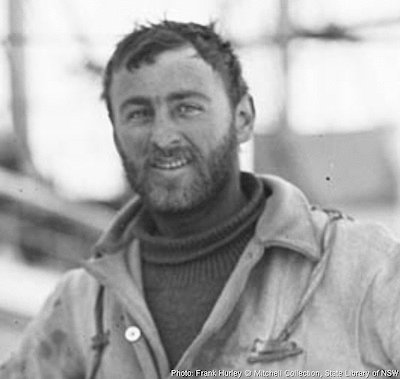Charles Francis Laseron
AAE position: Taxidermist, biological collector
Armed with a technical diploma in geology, Charles Laseron began his working life as a collector with the Sydney Technological Museum, an early precursor to today’s Sydney Powerhouse Museum. He was 25 when Mawson took him on as taxidermist and biological collector for the AAE.
During 1912 Laseron’s main tasks were collecting, preparing and preserving collected biological specimens, and serving as a general scientific assistant. He took part in sledging journeys to the south (laying food depots for the party seeking the South Magnetic Pole) and along the coast east of Cape Denison. Laseron was lucky to survive the latter journey, along with his companions Stillwell and Close, when the three were poisoned by carbon monoxide while cooking breakfast in a dug-out snow shelter.
Back in Sydney, Laseron was put in charge of the Techological Museum’s geology collections, and presented the museum with objects and scientific specimens from the expedition. With the outbreak of war he enlisted in the Australian Imperial Forces, but was wounded at Gallipoli only two days after landing. Returning to Sydney, he was discharged in 1916, after completing his first published work, a short war diary called From Australia to the Dardanelles.
Laseron returned to his museum position, and in 1919 married Mary Theodora Mason. With an increasing interest in applied art he was put in charge of those collections in 1926. He argued strongly for improved facilities and funding to house the collections — a campaign which came to fruition long after his departure with the opening of the Powerhouse Museum in the mid-1980s.
Frustrated by his lack of progress, in 1929 Laseron resigned to set up an antique dealership and auctioneer of books, coins and stamps. Despite the economic crash late that year, and the ensuing Great Depression, he managed to make a living, and his expertise in philately became widely recognised. After further army service as a mapping instructor in World War II, he was a clerk for the Colonial Sugar Refinery Company before turning his attention to science and writing.
In 1947 Laseron published the book for which he is best known — his account of his AAE experiences, South with Mawson. His continuing interest in science saw the publication of notable publications on molluscs by the Australian Museum (which now houses his type collections). In the mid-1950s, he turned his hand to his first love, earth sciences, completing two important popular works on Australia’s geomorphology and geology.
Charles Laseron died in 1959.

